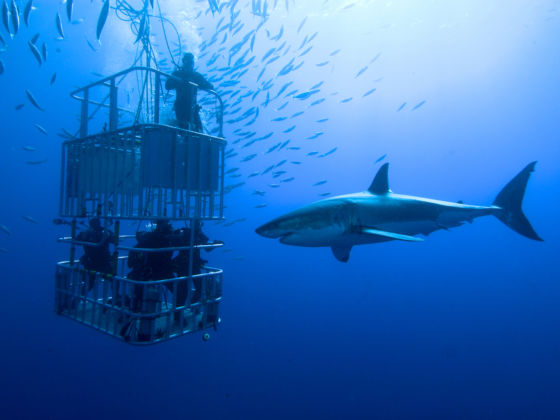When you tell anyone you’re going shark diving you’ll get one of two responses:
1. “Oh my God I’m so jealous, please take pictures regardless of what might happen to your left arm!”
2. “Since you’ve clearly lost your mind and might be dead tomorrow, don’t forget you still owe me $20.”
These both are reasonable responses to announcing you’ll spend a perfectly nice Tuesday morning trapped in an underwater cage surrounded by man-eating sharks. Most of that excitement/terror is based on YouTube videos of Great Whites auditioning for Jaws 5 and biting their way into said underwater cages. These videos do well because, well, who doesn’t want to see people getting attacked by sharks? But also because if someone posted a video of actual shark diving, it would get less views than a tutorial on how to mix paint.
